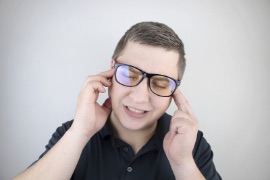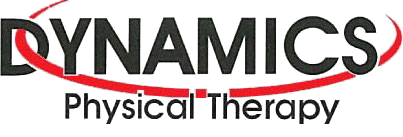 Benign Paroxysmal Positional Vertigo (BPPV) is an inner ear disorder that is usually localized to one ear and develops when tiny calcium crystal-based structures called otoconia become dislodged and move freely in the fluid-filled region of the inner ear. The crystals may gradually drift into various areas, including semicircular canals that are responsible for sensing head movements.
Benign Paroxysmal Positional Vertigo (BPPV) is an inner ear disorder that is usually localized to one ear and develops when tiny calcium crystal-based structures called otoconia become dislodged and move freely in the fluid-filled region of the inner ear. The crystals may gradually drift into various areas, including semicircular canals that are responsible for sensing head movements.
Crystals that travel into the semicircular canals do not usually cause problems until a person starts changing the position of the head (e.g., looking up), as this causes the crystals to agitate nerves that control balance. As a result, BPPV is one of the most common causes of vertigo—the sudden onset of balance problems and spinning sensations. People who experience vertigo may feel as if the world is spinning around them.
BPPV Symptoms and Treatment
The symptoms of BPPV include:
● Nausea
● Vomiting
● Rapid, unexpected dizziness
● Spinning sensation (vertigo)
● Abrupt unsteadiness or loss of balance due to vertigo
The symptoms often occur sporadically and may last for a few minutes or longer, depending on the situation that triggered an episode. Furthermore, the type of activity that may induce symptoms typically varies from person to person. However, changes in head position frequently lead to BPPV-related issues. Individuals might also feel off balance while standing or walking, even if a spinning sensation does not develop.
For some people, BPPV episodes may disappear for extended periods and then reappear. Symptoms that occur frequently, become severe or persist for prolonged periods warrant a consultation with a healthcare professional such as a physical therapist who can assess the possible cause and offer beneficial treatment.
An individual may develop BPPV following head trauma (e.g., a severe blow to the head), and disorders that damage the inner ear may also lead to this condition. In rare cases, an injury that occurs during ear surgery may trigger BPPV. This form of vertigo is also linked to migraines, while some people experience this condition for unknown reasons. BPPV may occur at any age but is most often observed in people who are 50 years of age or older. In addition, more women are diagnosed with BPPV than men.
Most people who suffer from this condition endure considerable discomfort, but BPPV rarely causes serious complications. However, symptoms of BPPV such as dizziness and loss of balance can increase the risk of injuries due to falls. The increased fall risk in combination with the frequent occurrence of symptoms necessitate treatment such as physical therapy.
Benefits of Physical therapy
Physical therapy for BPPV involves performing specific maneuvers that reposition the head and body. The purpose of the maneuvers is to move the crystals out of the semicircular canals and back into a specific part of the inner ear called the utricle. A physical therapist performs a thorough assessment to determine the most appropriate maneuver that will help transfer the crystals to the correct area.
The treatment plan also entails learning exercises that target BPPV symptoms and improve balance. BPPV that develops due to head trauma is often a recurring problem that requires ongoing treatment. Whether or not the cause is identified, it is important to follow the treatment regimen and periodically follow-up with a physical therapist who can repeat effective maneuvers that help reposition the crystals.
If you are suffering from BPPV or other symptoms of vertigo, call Dynamics Physical Therapy today to speak with one of our highly-trained physical therapists who can schedule a consultation.
References
1. von Brevern M, Bertholon P, Brandt T, et al. Benign paroxysmal positional vertigo: Diagnostic criteria. J Vestib Res. 2015;25(3-4):105-117.
2. Oghalai JS, Manolidis S, Barth JL, et al. Unrecognized benign paroxysmal positional vertigo in elderly patients. Otolaryngol Head Neck Surg. 2000;122(5):630-634.
3. Salvinelli F, Firrisi L, Casale M, et al. Benign paroxysmal positional vertigo: Diagnosis and treatment. Clin Ter. 2004;155(9):395-400.
4. Bressi F, Vella P, Casale M, et al. Vestibular rehabilitation in benign paroxysmal positional vertigo: Reality or fiction? Int J Immunopathol Pharmacol. 2017;30(2):113-122.
5. Strupp M, Dlugaiczyk J, Ertl-Wagner BB, et al. Vestibular disorders. Dtsch Arztebl Int. 2020;117(17):300-310.
6. Varela AS, Magro JB, Pérez SS, et al. Benign paroxysmal vertigo: a comparative prospective study of the efficacy of Brandt and Daroff exercises, Semont and Epley maneuver. Rev Laryngol Otol Rhinol (Bord). 2001;122(3):179-183.


